(Meant for embedding in the concrete floor)
Chapter 2
2.1.2 Embedded rectangular ducts of galvanised steel for residential construction and floors equivalent to residential construction
2.1.2.1 Sheet quality
For the manufacture of galvanised air ducts, sheet steel is used with anti-corrosion zinc-based coatings, applied using the Sendzimir process, in the qualities:
- DX51D 150 MAC with a double-sided zinc coating of 150 g/m² according to
triangulation test (average thickness of 10 microns per side). Sheetquality/zinc quality according to NEN-EN 10346, tolerances accordingto NEN-EN 10143. - DX51D ZMA140 AC with 140 g/m² double-sided zinc coating according to
triangulation test (average thickness of 10 microns per side). Sheetquality/zinc quality in accordance with NEN-EN 10346, tolerances inaccordance with EN 10143.
2.1.2.2 Sheet thickness
Galvanised air ducts are manufactured with a sheet thickness which depends on the largest duct side. The ducts 170 x 70 and 170 x 80 are made of 0.5 mm sheet thickness and the 200 x 80, 220 x 80 and 250 x 80 sizes of 0.6 mm sheet. Other sizes can be made to order.
2.1.2.3 Cross-connections
In embedded rectangular ducts the cross-connections are executed as sliding connection, using a coupling piece or sleeve. This connection is secured by means of self-drilling parkers or, where possible, with spot welds and then finished off with tape, so that no water or cement can penetrate the air duct.
2.1.2.4 Longitudinal connections
Longitudinal joints are generally made by means of a roller weld, a standing seam or a spot weld. Where necessary, plastic sealant is applied internally or externally to ensure airtightness.
2.1.2.5 Dimensions
The ducts are manufactured in the dimensions given below:
170 x 70 mm, 170 x 80 mm, 200 x 80 mm, 220 x 80 mm, 250 x 80 mm
2.1.2.6 Various designs of rectangular ducts
Straight duct
The straight ducts are supplied in standard lengths of 3 metres.
Bends
Standard bends are supplied as 90° or 45° bends and are flowing.
Coupling or sleeve
Couplings or sleeves are supplied as standard with a length of 80, 100, 125, 200, 300 or 600 mm, depending on the supplier. When the coupling is longer than 80 mm they are also called fitting pieces.
End caps
End caps are available in all the stan
T-pieces
T-pieces are supplied with an inner radius of at least 100 mm.
Angled side connection
A T-piece with right-angled inside corners can be made by making a cut in a straight duct the size of the side connection. This is then fitted to the straight duct using self-drilling parkers (with a maximum length of 13 mm), after which the connection is taped or sealed airtight using sealant. The side connection can also be installed at 45°.
Round connecting plugs or round flange sleeves
These are available in the internal dimensions Ø 80, Ø 100, Ø 125, Ø 150, Ø 160, Ø 180 and Ø 200 with a length that depends on the supplier and on the floor thickness. These connections can also be executed under 45°.
Rectangular saddle on round pipe (saddle piece)
The rectangular saddles can be supplied for a round pipe of Ø 180 up to Ø 500.
Branching sizes are: 170 x 70, 170 x 80, 200 x 80, 220 x 80 and 250 x 80.
Loose corner
These are straight duct pieces with a cut-off corner on the side of the cover and provided with a circular connection mouth. The loose corner is available in a left, right or symmetrical version with a Ø 125, Ø 150, Ø 160 or Ø 180 connection.
Adapters
Adapters are executed in such a way that the top angle may not exceed 45°. These adapters can be made rectangular to round, or rectangular to rectangular.
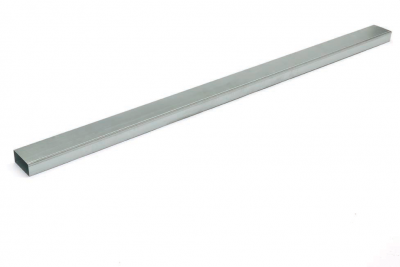
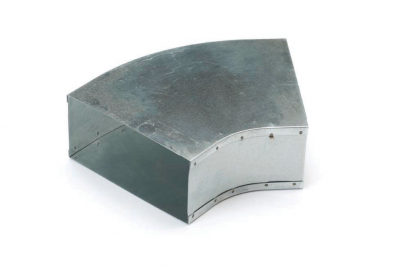
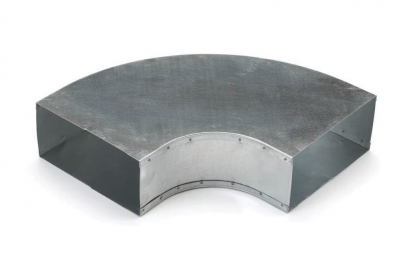

2.1.1.7 Tolerances
The maximum tolerance for the length of a straight duct is ± 0.005 x L. The tolerance for rectangular dimensions is + 0 to - 4 mm.
The maximum tolerance for angles is ± 2°.
2.1.2.8 Mounting
The embedded rectangular ducts must be secured to the concrete floor in such a way that the duct parts cannot float during the pouring of the concrete. This is usually done by means of hole tape around the duct on both sides, which is fixed to the concrete using anchor plugs. There are several methods to sufficiently fix the ducts, but the duct must be secured at least every two metres.
It is also common for the ducts to be poured in to be delivered to the construction site prefabricated. Dented and bent ducts may not be installed. All openings must be sealed with plastic caps (mortar lids). The building contractor must ensure sufficient propping of the recesses to prevent sagging of the duct flange sleeves.
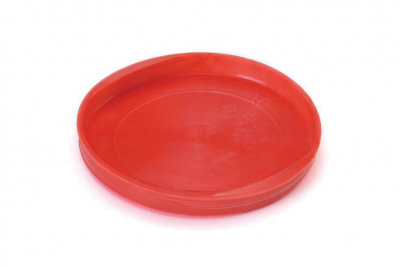
2.1.2.9 Circular air ducts (for embedding in concrete floor)
See chapter 2.1.3 round ducts of galvanised steel. In addition to this chapter, bends are often used in housing construction. These bends are available in diameters of 80, 100, 125, 150, 160, 180 and 200 mm. Standard bends are made with angles of 15°, 30°, 45°, 60° and 90°. The material, thicknesses, tolerances etc. are the same as for the pressed bends, as mentioned in chapter 2.1.3.
In addition, these ducts are used for so-called pour-in pots. These are mainly used to make a transition from a horizontal duct (Ø 80 mm) in the floor to a vertical branch in the room, for example, to connect an extraction and/or supply valve in the room concerned. The diameters that are used are: Ø 100 and 125 mm. The branch diameter is Ø 80 mm. This branch can be executed single or double. Dimensions, thicknesses, material etc. are as mentioned in chapter 2.1.3.
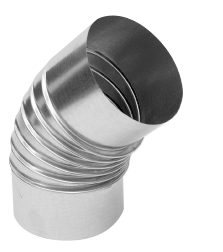
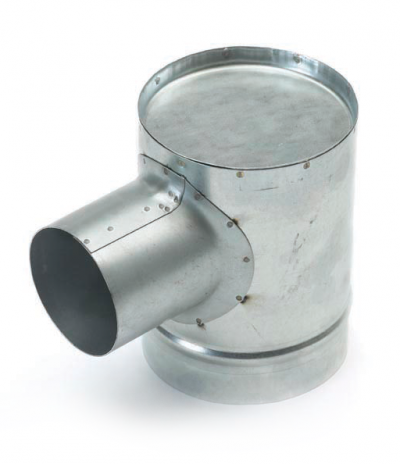
2.1.2.10 Airtightness
Since these ducts are poured in, the joints and the duct itself must be leakproof for cement water. After being poured, the ducts are incorporated in the concrete floor and are considered to be airtight. After being embedded, the ducts must comply with airtightness class C.
If there are higher requirements for the airtightness of the duct system (e.g. if the duct is not embedded), these must be explicitly described so that the execution of the air duct system can be adjusted accordingly. The specifications could then read as follows:
All air ducts, fittings and hoses to be supplied must comply with their respective NEN-EN standards. The complete air transport route, both supply and return between the air conditioning unit and the vents (including vent plenums, if present), must be delivered and installed according to the quality and execution standards as laid down in the Luka Quality Guide, digital version, whereby at least airtightness class "C" must be complied with.
- 2.1.1Rectangular ducts made of galvanised steel
- 2.1.2Embedded rectangular ducts of galvanised steel for residential construction and floors equivalent to residential construction
- 2.1.3Circular ducts made of galvanised steel
- 2.1.4Oval ducts made of galvanised steel
- 2.2.1Rectangular aluminium ducts
- 2.2.2Circular aluminium ducts
- 2.3.1Rectangular ducts made of stainless steel
- 2.3.2Circular ducts made of stainless steel
- 2.4.1Rectangular ducts made of hard plastic
- 2.4.2Circular ducts made of hard plastic
- 2.4.3Embedded rectangular ducts made of hard plastic
- 2.5.1Rectangular ducts made of mineral wool with aluminium outer layer
- 2.5.2Rectangular ducts made of mineral wool with polyester outer layer
- 2.5.3Circular ducts of mineral wool
- 2.6.1Rectangular hard foam ducts with aluminium outer layer
- 2.6.2Rectangular hard foam ducts with polyester outer layer
- 2.6.3Rectangular hard foam ducts with aluminium outer layer
- 2.7.1Internal and external coating of air ducts
- 2.8.1Thermal insulation of rectangular and circular air ducts
- 2.9.1Fire resistant insulation and sheeting of metal air ducts
- 2.10.1Assembly instructions
- 2.11.1Airtightness air transport route
- 2.12.1Internal cleanliness of new air ducts and associated fittings and components

